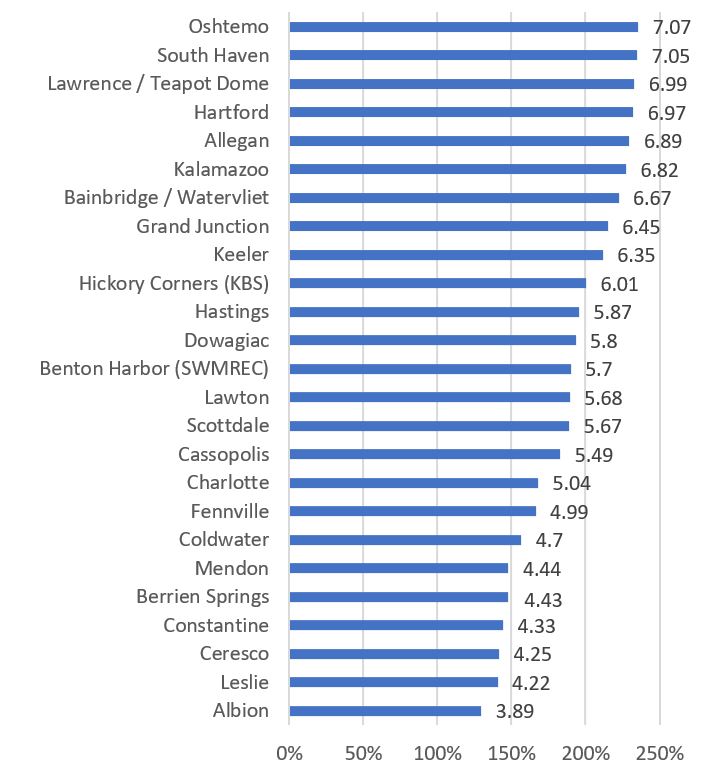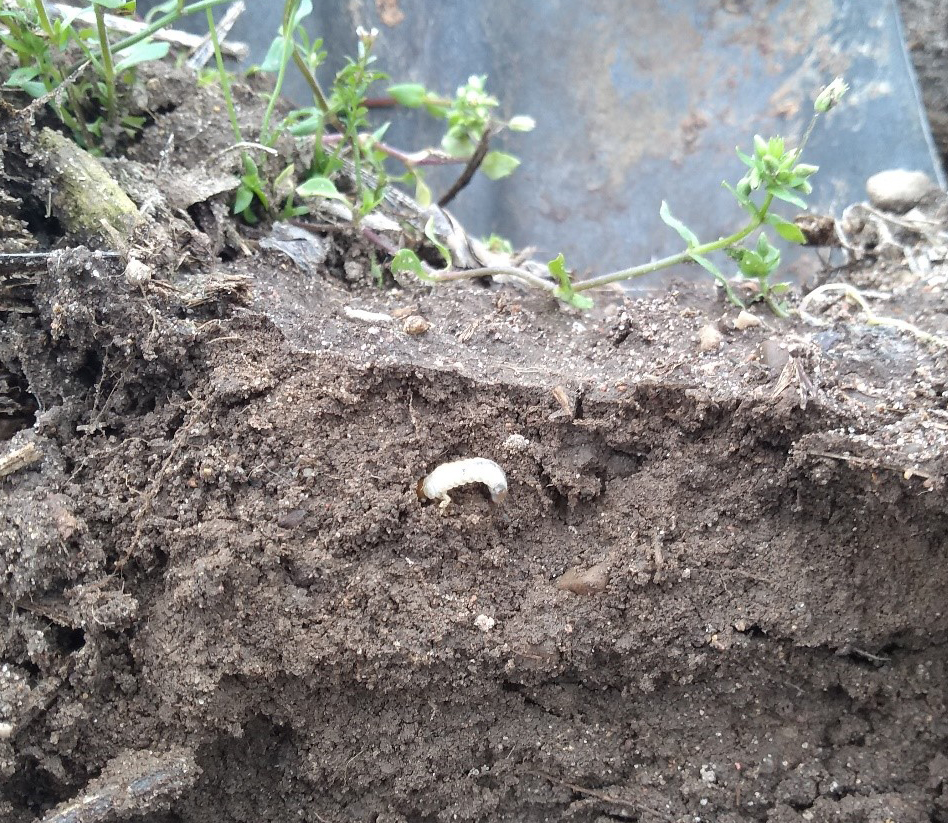Southwest Michigan field crop update – May 9, 2019
Fair weather last weekend allowed for some field work to proceed on lighter soils in more fortunate areas that received less rainfall into Monday.

Swamped!
Wet conditions persisted this week across the region. Fair weather over last weekend allowed for some field work to proceed on lighter soils in more fortunate areas that received less rainfall into Monday. However, rains once again returned, bringing field activities to a halt. A couple of folks asked how this year’s rainfall totals compared to normal across southwest Michigan. A quick visit to the Michigan State University Enviroweather network revealed we are well above normal rainfall, which we all knew, but areas of southwest Michigan are better than two times the normal precipitation over the last four weeks, which is a little less than 3 inches on average.

Outlooks
While conditions have been wet, NOAA’s 6-10 day and 8-14 day outlooks show Michigan cooling and drying off substantially in the near term forecast. It will take some of this weather to get producers back into the fields where fields have been inundated with standing water for much of spring. So, there may be some needed light at the end of the tunnel when it comes to field work.
Crops
Alfalfa growth has been pretty good given the ample amount of rainfall, occasional sunshine and moderate temperatures. Alfalfa weevil activity remains low, but fields should be checked regularly now that the pest is active. The Mendon Enviroweather station, usually one of the warmest locations, is at 415 growing degrees days (GDD) base 41 since March 1. The usual first cutting guidance is at 750 GDDs. To look at GDDs in your area, visit the Enviroweather network, select the most local weather station. select the field crops tab and then the Alfalfa cutting management tab. With cooler temperatures in the outlook, we probably will have a ways to go before alfalfa is ready for first cutting.
Some April planted corn has begun to emerge. I did not have the time to walk the field I saw near Schoolcraft, Michigan, but you could “row” the field yesterday. Lots of fields continue to have heavy loads of winter annual weeds, so be sure to scout these for cutworm activity as they get planted. Unfortunately, fields that were tilled early are also beginning to have substantial regrowth. I moved some brush last night at home and was amazed at just how terribly soft the ground was around the pile. Patience is going to be key when it comes to finding the right conditions to plant your fields to not create compaction issues.

Asiatic garden beetle larvae are active in fields in St. Joseph County and have moved up towards the soil surface. The ones I found were anywhere from 2 to 6 inches deep and appeared to be feeding on winter annual roots. Remember, Asiatic garden beetle white grubs have a bulbous “palp” or raised white spot on their cheeks. The ones I found were approximately 0.5 to 0.625 of an inch long. If you see Asiatic garden beetle white grubs before you plant in significant numbers, consider applying soil insecticides or plant-treated seed with at least the 500 level of seed treatment or greater. If you use a soil insecticide that contains an organophosphate (OP) component, be aware of potential OP-insecticide-herbicide interactions. Information is available in the MSU Extension Weed Guide under corn Table 1L, Page 58 (the last page of the corn section).
Not many soybeans have emerged yet following the cold and wet conditions of the last weekend in April. We will be looking for signs of chilling injury in these fields. In general, we are way behind on burndown herbicide applications.
Wheat is really growing fast. Fields I walked today were at Feeke’s growth stage 8 (last leaf just visible). I did not see much for powdery mildew and other leaf diseases, which is remarkable given the conditions. Color was reasonably good with some yellowing patches on some hillsides. Overall the crop looks good.



 Print
Print Email
Email